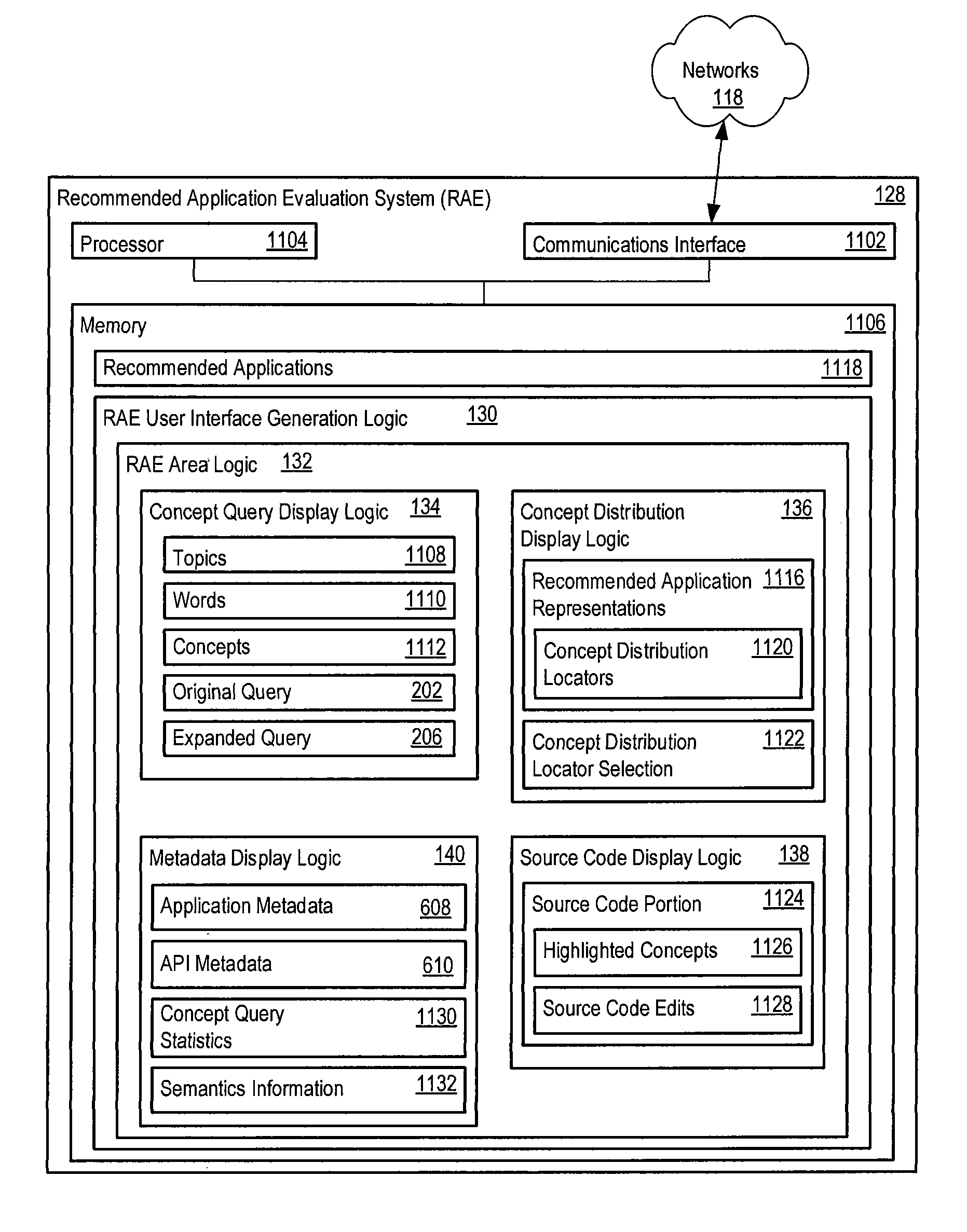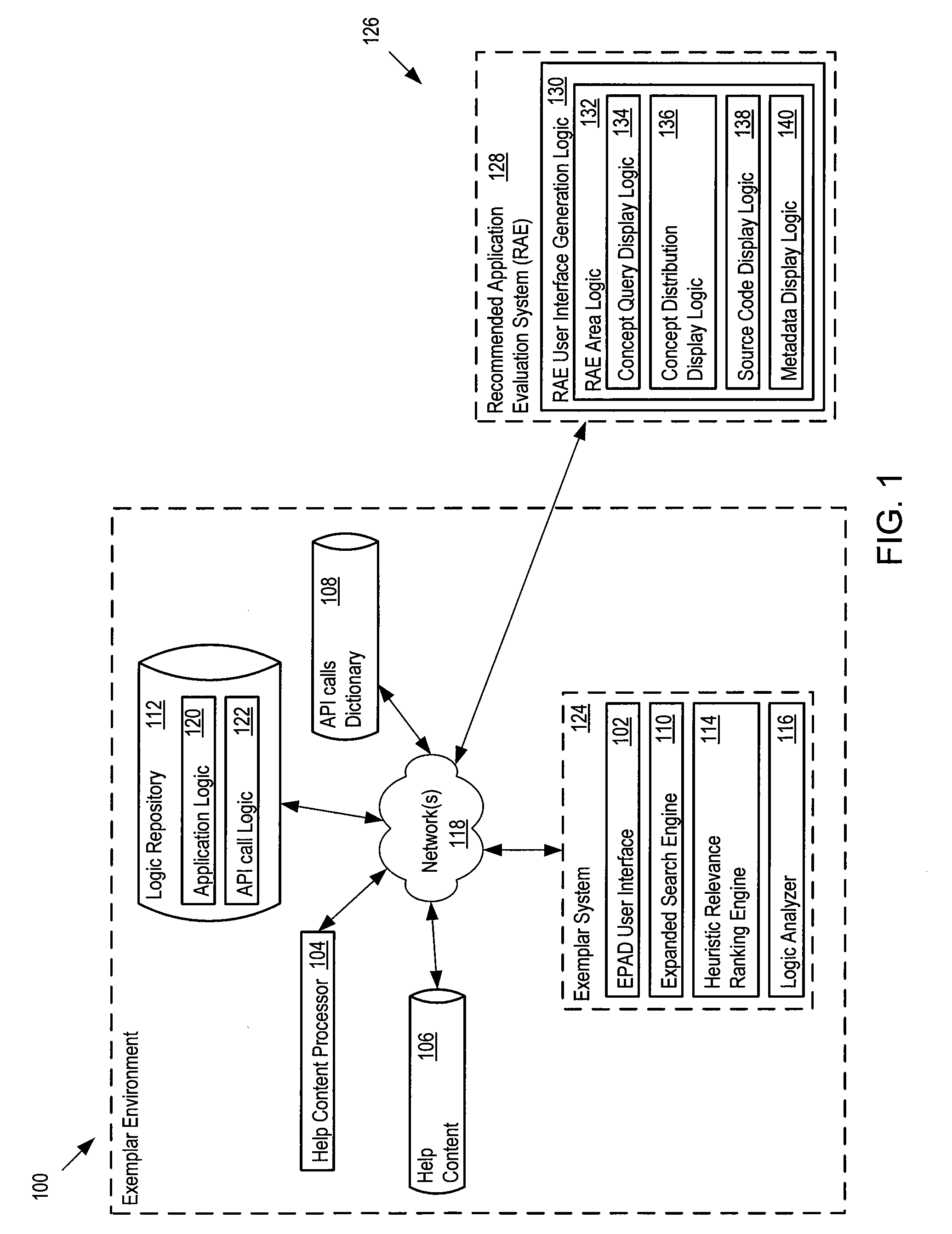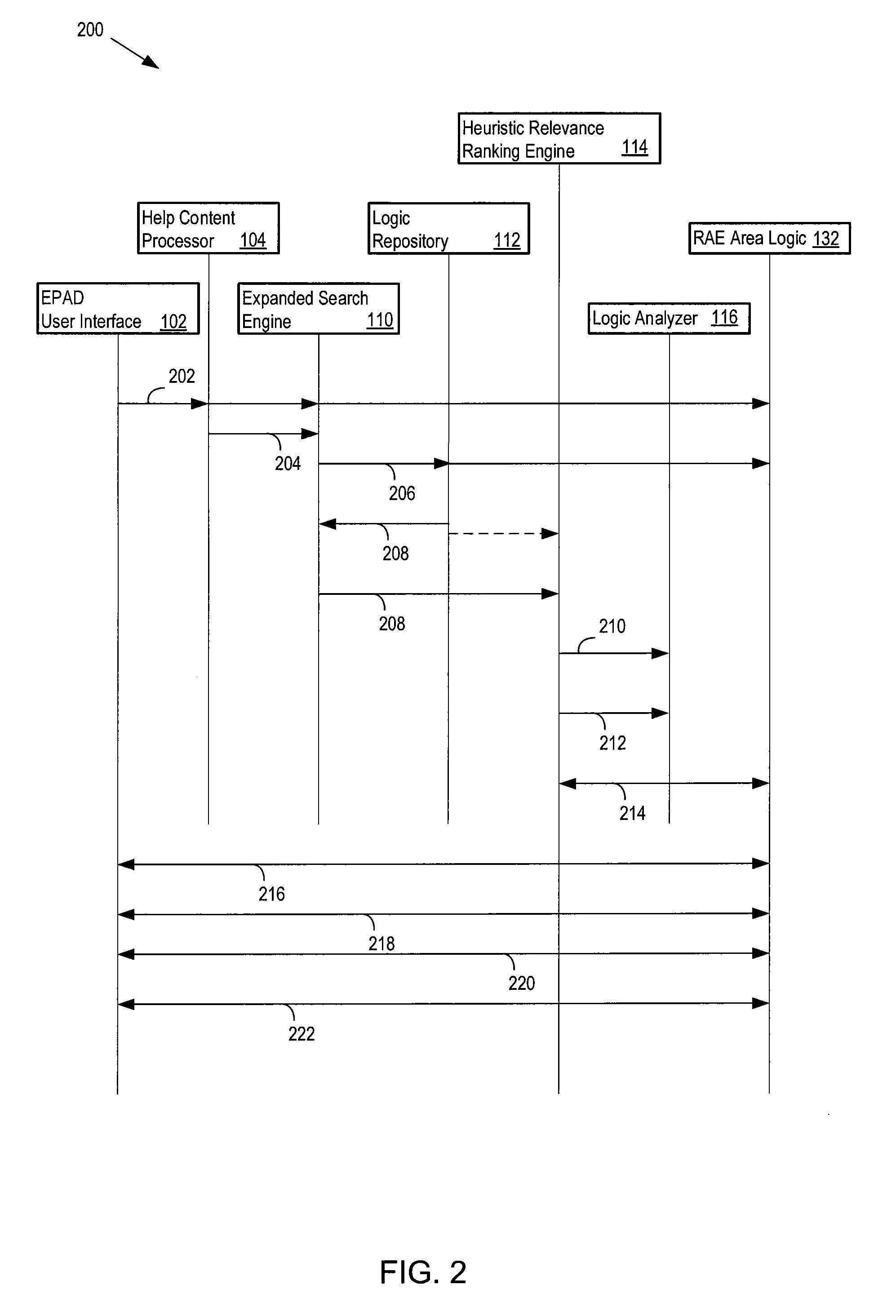Recommended application evaluation system
a technology of application evaluation and recommendation, applied in the field of recommendation application evaluation system, can solve the problems of reducing time, money and other costs, application often fails to implement functionality, and modern search engines do not ensure, so as to achieve rapid and efficient evaluation
- Summary
- Abstract
- Description
- Claims
- Application Information
AI Technical Summary
Benefits of technology
Problems solved by technology
Method used
Image
Examples
Embodiment Construction
[0037]The recommended application evaluation system (RAE) solves the technical problem of providing a tool to easily and quickly evaluate a recommended application to validate that the recommended application implements a particular functionality. In one implementation, the RAE may evaluate recommended applications obtained from the EXEcutable exaMPLes ARchive system (Exemplar).
[0038]Exemplar provides a tool that accepts high-level processing concepts as queries to identify, determine the behavior, rank and return the application logic of HRAs. Exemplar solves an instance of the difficult vocabulary problem that exists when users and developers describe processing concept with different words. Exemplar is not limited to basic keyword matching used in queries against application descriptions and comments included with application logic. Accordingly, when an application is highly relevant, and where a query contains keywords different from the words used by the developer to describe a...
PUM
 Login to View More
Login to View More Abstract
Description
Claims
Application Information
 Login to View More
Login to View More - R&D
- Intellectual Property
- Life Sciences
- Materials
- Tech Scout
- Unparalleled Data Quality
- Higher Quality Content
- 60% Fewer Hallucinations
Browse by: Latest US Patents, China's latest patents, Technical Efficacy Thesaurus, Application Domain, Technology Topic, Popular Technical Reports.
© 2025 PatSnap. All rights reserved.Legal|Privacy policy|Modern Slavery Act Transparency Statement|Sitemap|About US| Contact US: help@patsnap.com



